Tagged with 'Events'


-
Central Saint Martins and Pearls
Central Saint Martins and Pearls
We are delighted to announce a very special collaboration in Pearls with the BA Jewellery Design course at Central Saint Martins (CSM), London.
Central Saint Martins ranks amongst the most influential arts institutes in the world. It has the reputation for being the home of creativity. The College exists to generate knowledge, to inspire creativity and develop the next generation of ambitious designers, artists and performers. CSM attracts the world’s most talented students. Drawn from over 90 countries the students represent some of the world’s most exciting raw talents.
What will we be doing with CSM this year?
Firstly, we have been working with a selection of Year Three BA Jewellery Design students so that they have a fantastic opportunity to be given free rein to produce a stunning piece of jewellery using pearls. With our own heritage of over 50 years of knowledge and experience of working with pearls, we hope this collaboration will be a great experience for these soon-to-be graduates.
In June, Winterson will be awarding a prize for the Best Use of Pearls at the Jewellery Awards evening on 20th June 2013 during the Central Saint Martins degree shows.
Secondly, the Year One BA Jewellery Design students at CSM are working in conjunction the upcoming Pearls exhibition to be held at the Victoria and Albert Museum (V&A), the world famous museum of art and design, in the Autumn later this year. The exhibition explores the history of pearls from the early Roman Empire through to the present day, the beauty and allure of pearls which across centuries and cultures have long been associated with wealth, royalty and glamour.
Following an introductory talk by the exhibition's curator Beatriz Chadour, the students will be investigating the historic and cultural significance of pearls and their contemporary relevance and versatility. In addition they will be given a handling session at the V&A and experimenting directly with pearls in the workshops.
We will also be supporting these students with a range of pearls to work with. The results will be shown at the V&A on the Pearls exhibition Study Day, alongside a How to Wear Pearls event, which the students will be hosting.
It's a truly great privilege to be working with these two highly respected institutions of design.
Follow our Journal or Facebook page to keep up to date with how the collaboration develops this year.
-
Just Another Day Selecting Fine Pearls
Just Another Day Selecting Fine Pearls
Our buying team returned this week from Hong Kong with a new selection of fine pearls for our jewellery collections.
Hong Kong is the centre of the pearl business today, with dealers and pearl farmers from around the world sorting and selecting through the best (and the worst) of the new season's harvest of cultured pearls.

The size of this jewellery show also makes it one of the biggest in the world, with over 42,000 buyers from 140 different countries. Finished jewellery, brands and designers exhibit alongside the glittering distraction of rows upon rows of diamonds, precious gemstones and pearls.
With three main jewellery fairs in Hong Kong a year, the March and June exhibitions are the best time to view and select from the new harvest. This is because most pearls are harvested when the water is cool. Colder temperatures are believed to improve the quality of the lustre of the pearl.

Most sellers in the main part of the jewellery fair are wholesalers, but a number of the big pearl farmers and trade groups from the pearl producing regions of Tahiti, Australia and Indonesia also hold auctions by invitation to try and obtain the best prices for their new harvest.
In high demand this year were golden pearls from Myanmar, famed for their deep rich, burnt orangey golden colour. Prices for some pearls were reported to be reaching 5-8 times the seller's asking prices.
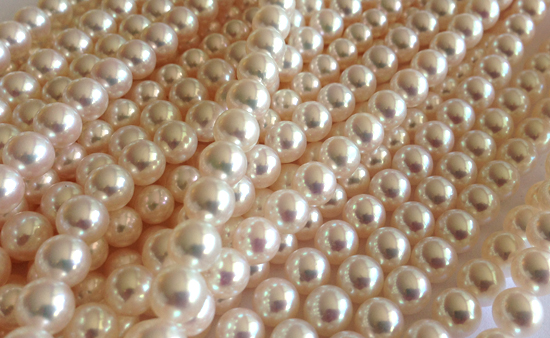
This is where it can take years of experience to be able to select a lot of fine pearls from the many others, recognising the excellent quality of nacre that gives the exceptional Akoya pearls above their mirror like shine, or the telltale signs of when a pearl's lustre is fading.
A typical pearl auction is held in a large quiet room away from the bustle of the main jewellery fair. Perhaps up to 300 or 400 different lots of loose pearls are arranged in bowls along long tables. Each lot will be comprised of between a few hundred to 5,000 individual pearls, sorted by shape, colour and quality, but usually mixed by size.
Buyers select a bowl that they are interested in, ask for it to be weighed and then search for a clear table with good, natural daylight to look at the pearls in each lot.
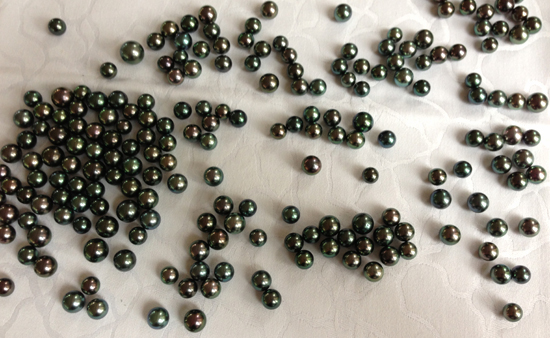
Sorting through such a large group of pearls such as the one above can be a daunting and rewarding challenge. It is important to think about the eventual use of the pearls in jewellery, their various grading qualities in terms of lustre, shape, colour and surface. Higher quality pearls will be used for earrings and pendants, whilst slightly less perfect pearls tend to be made into necklaces.
If everything looks good, the final stage of the auction is to make a sealed bid. A price in Japanese yen, dollars or euros (depending on the particular auction) is written on a small ticket and dropped into a ballot-like box.
A short wait follows, until the auction closes, before it is possible to see if your bid is ultimately successful.

Amongst our immediate favourites from this trip's selection were the beautiful dark Tahitian pearls picture above, with their gorgeous natural colours of peacock purple, cherry, aubergine, blue and green.
Over the next few months, we will be introducing these gems to Winterson.
-
Spring Rocks into Fashion at LFW
Spring Rocks into Fashion at LFW
If you happened to wander past Somerset House in London last weekend, you may have caught a sense of the semi-annual excitement that is London Fashion Week (LFW).
For the last 5 days, some of the UK's outstanding designers have been unveiling their carefully assembled new season's fashions and accessories for Autumn Winter 2013.
LFW this year hosts The Rock Vault again with fine jewellery being exhibited in the West Wing of Somerset House. The group of 10 talented jewellers included Fernando Jorge, Hannah Martin, Husam El Odeh, Imogen Betfield, Jo Hayes Ward, Melanie Georgacopoulos, Sophie Bille Brahe, Tomasz Donocik, Yunus & Eliza, and for the first time, Alice Cicolini.
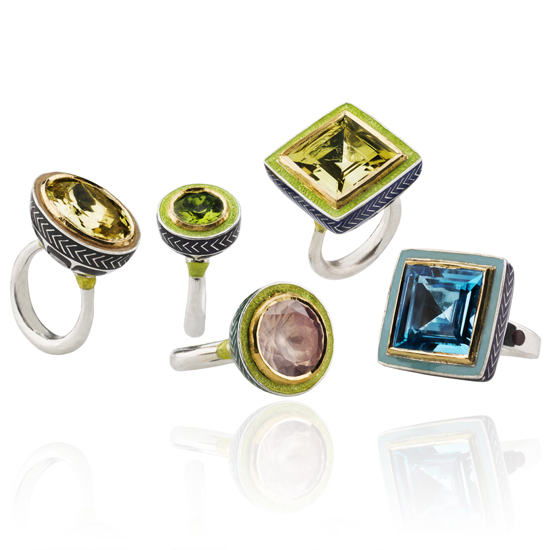
Alice Cicolini is a London based jeweller who studied at the London College of Fashion and received her MA in Jewellery Design from Central Saint Martins. Her jewellery designs are characterised by richly coloured gems and covered with the deep, jewelled tones of vitreous enamel.
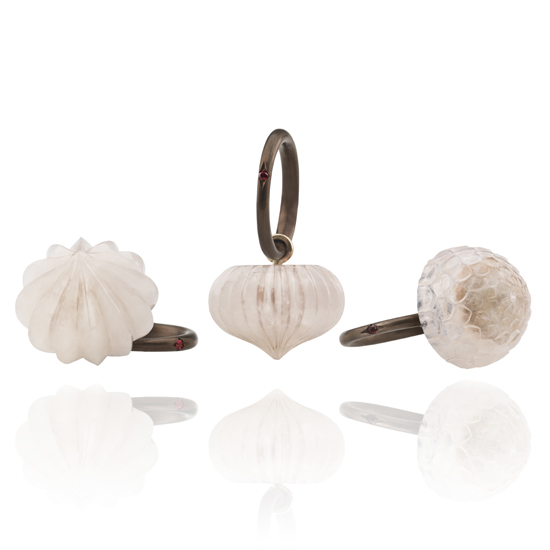
Alice explains “Coming from a curatorial background, my work blends influences from many sources - for example, Bauhaus costume, mid-century British ceramics, traditional South Asian and Far East Asian textiles, and of course the possibilities opened up by the craftsmanship.”
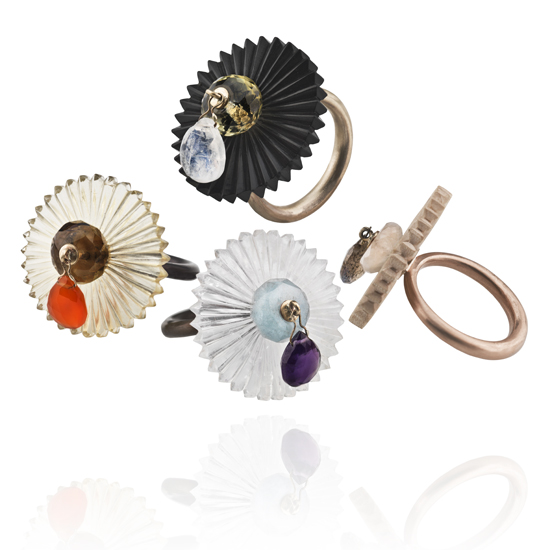
At Winterson we have been collaborating with Alice Cicolini to develop a collection of pearl rings and look forward to launching her new jewellery collection in the Spring later this year.
Elsewhere around the main show tent in the square and its side rooms, the atmosphere positively bustles with the ultra fashionable, the eccentric and often a particularly British sense of humour. Photographers gather at the entrance to snap at the crowd as the famous and fashionistas pause for the camera.
Most eye-catching perhaps are the shoes, with extreme heels and platforms being guided dangerously and skilfully across the paved square. In this world of fashion, you won’t fail to smile or be inspired by the use of colour and design.
-
A Poem for Valentine's Day
A Poem for Valentine's Day
Sometimes the simplest of thoughts can say it all.
With Valentine's Day being celebrated by lovers around the world this week, why not take a moment for some inspiration from one of our greatest and most romantic poets?
In his short life John Keats (1795-1821) wrote some of the most beautiful and sensual poetry that we know, including hundreds of letters and poems to the great love of his life Fanny Brawne.
Their time together, however, was cut tragically short. Soon after having met in the Autumn of 1818, Keats was diagnosed with tuberculosis. Moving south away from the cold English winter, Keats died in Rome in 1821 at the early age of 25. After leaving London, Keats did not see Brawne again and asked to be buried with a lock of her hair and her unopened letters that had been too painful for him to read.
This poem by Keats from an unidentified opera was published some time after his death and is filled full of longing for a lost love, who Keats symbolically compares to the innocence and purity of a perfect white pearl.
Asleep! O Sleep A Little While, White Pearl!And let me kneel, and let me pray to thee,And let me call Heaven’s blessing on thine eyes,And let me breathe into the happy air,That doth enfold and touch thee all about,Vows of my slavery, my giving up,My sudden adoration, my great love! John Keats, Extracts from an Opera, 1818
Our perfect gift for Valentine's Day would be this beautiful Akoya Pearl and Diamond Pendant, which features a classic round, white Akoya pearl with a sparkling diamond set in 18 carat white gold.
An understated and elegant piece of jewellery, there could be few simpler ways to surprise and celebrate your love.
-
Contemporary Jewellery at the Design Museum
Contemporary Jewellery at the Design Museum
Unexpected Pleasures is a new exhibition on contemporary jewellery at the Design Museum London, celebrating the art of the unconventional.
Delicate and sophisticated designs, precious gemstones set in an elegant setting of silver or gold, a form of adornment - these are the accepted forms of jewellery today.
The contemporary jewellery movement was born in the 1970s to highlight the notion that jewellery is as much about our emotional attachments and response to jewellery, as well as about its financial value. Many of the exhibition's 200 pieces chosen from around the world will certainly make you smile, be surprising or perhaps just elicit a yawn.
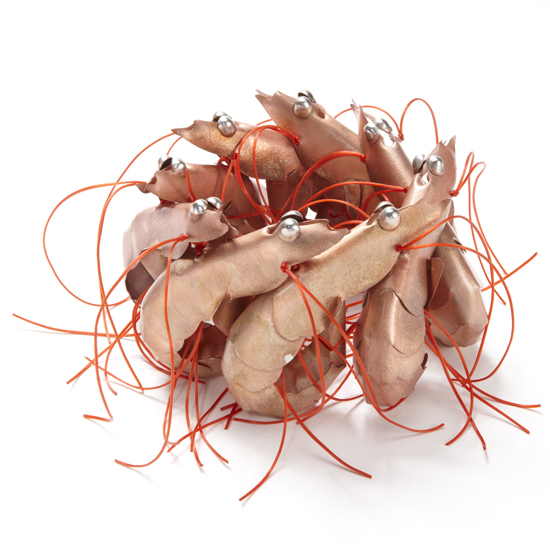
Whatever your reaction, exhibits such as the Scampi Bracelet by David Bielander above or the Yellow Kelly pendant necklace by Felieke van der Leest below show that contemporary jewellery can successfully challenge our views of what can defines and makes jewellery.
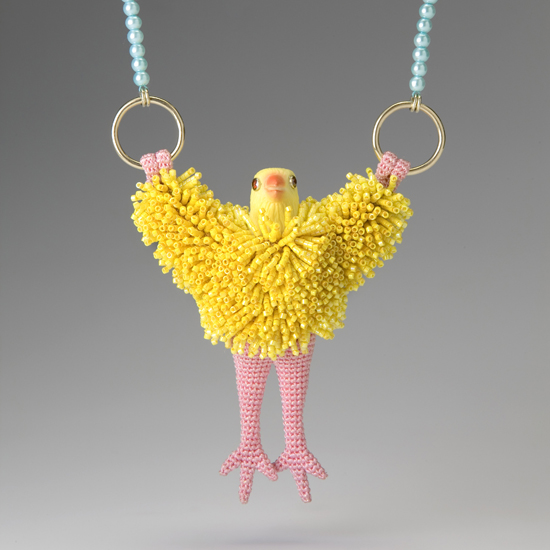
Curated by jeweller Susan Cohn, there are three main themes to the exhibition examining how we experience wearing jewellery, the meaning and narratives that are expressed in the jewellery that we wear and a perspective on the origins of present day jewellery trends.
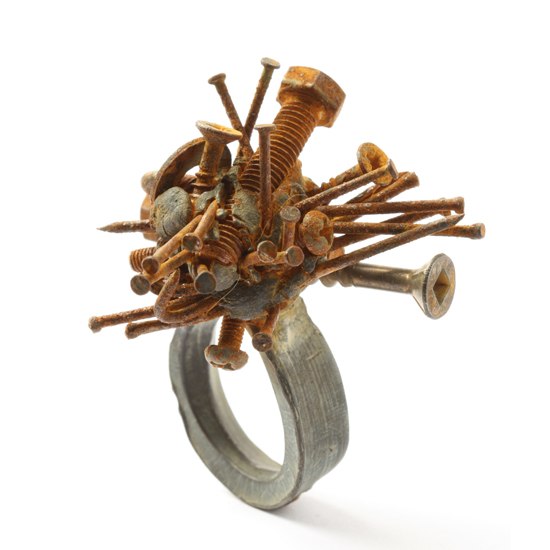
The contemporary jewellery presented is discreet, pretty and poetic at times, whilst being loud, wild and completely unwearable at others. True to the unconventionality of the jewellery, the materials chosen are also rarely valuable as is the case with this ring of rusty nails and screws by Karl Fritsch above or the necklace of vibrantly colourful Paper Pearls by Dutch artist Mano van Kouswijk.
Amongst the jewellery pieces displayed was this woven fine nylon Veil (1983) by British artist, and Course Director of BA Jewellery at Central St Martins, Caroline Broadhead. Reminiscent of a screen, the flexible Veil explores the space of the wearer and the ability of the wearer to look through it.
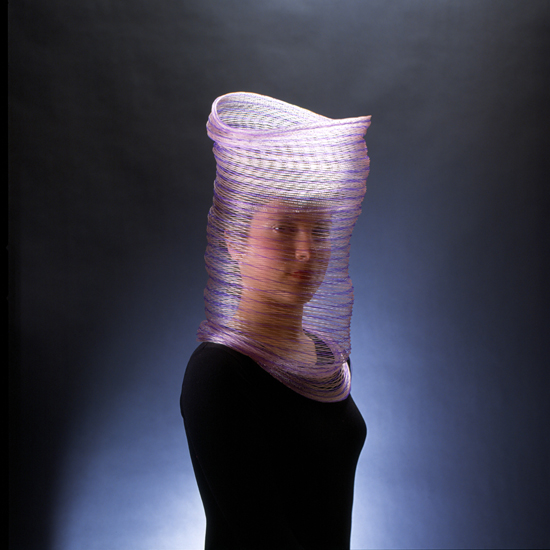
The exhibition does push the traditional jewellery lover into a nearly uncomfortable place. Are these designs valuable pieces of jewellery or just art? Perhaps the unexpected pleasure of this exhibition is not just the surprising exhibits, but the questions it raises too.
Unexpected Pleasures: The Art and Design of Contemporary Jewellery at the Design Museum, London is open until until the 3rd of March 2013.
-
Tim Walker: Story Teller at Somerset House
Tim Walker: Story Teller at Somerset House
Tim Walker: Story Teller is a new exhibition at Somerset House, London. What would fashion, a love for beautiful clothes and accessories be without the magic of photography?
Vogue has promoted fashion through its illustrations and photography since the foundation of the magazine in 1891. Amongst the most exciting fashion photographers today, Tim Walker has been working with the influential magazine for nearly 20 years.
For another two weeks until 27 January 2013, a selection of Tim Walker’s most exceptional photographs are being presented in a stunning exhibition at Somerset House, London.
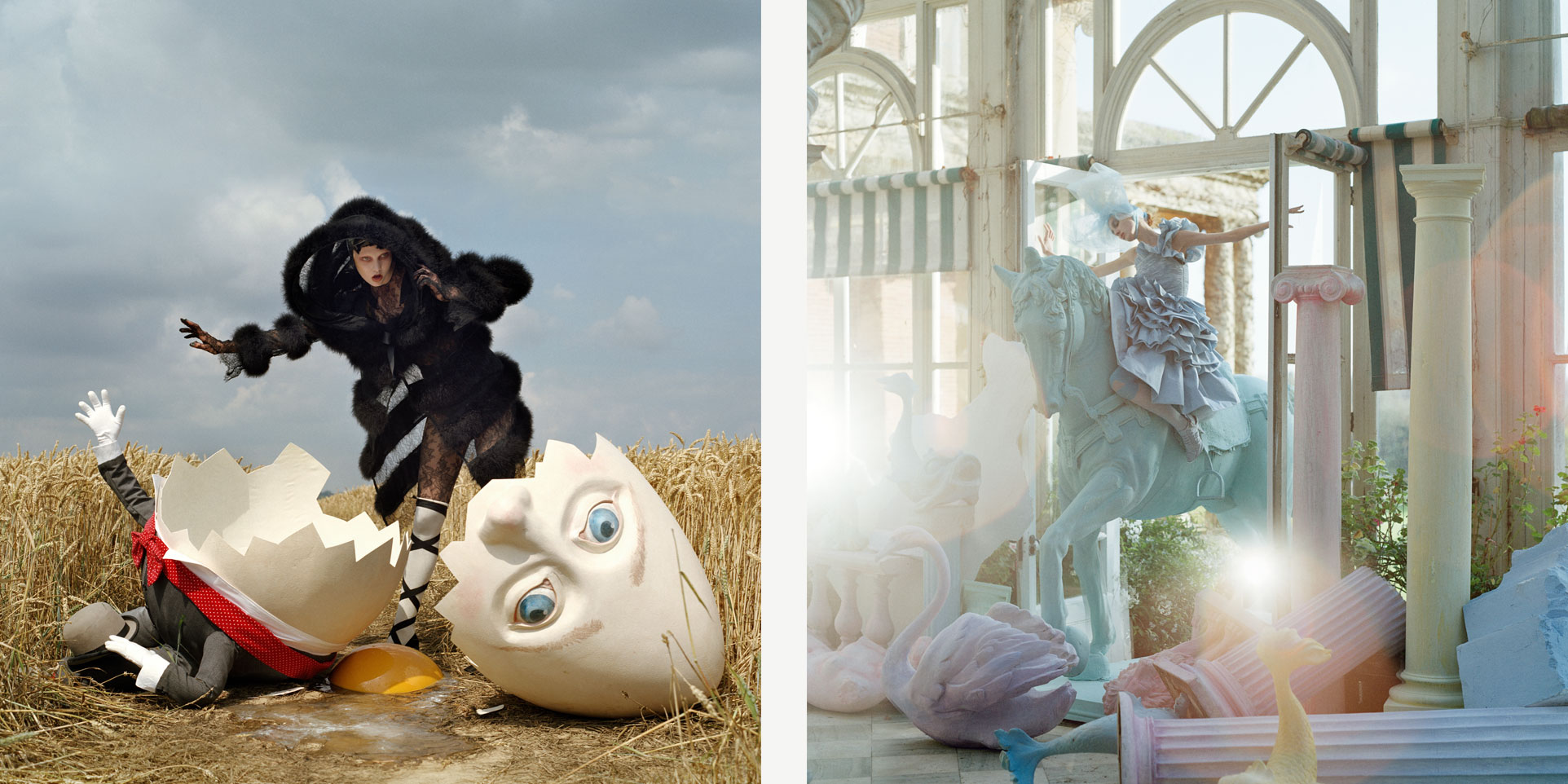
Image 1: Karlie Kloss and broken Humpty Dumpty, Rye, East Sussex, 2010
Image 2: Olga Shearer on blue horse, Sennowe Park, Norfolk, 2007
Born in 1970 in England, Tim Walker started taking photographs as a teenager and at the age of 25 published his first fashion story for Vogue. The work of Tim Walker is in a way quintessentially British, with originality, eccentricity and humour.
The images are filled with wonder and fantasy as Tim Walker presents fashion in the context of magical sets, inspired by legendary fairy tales. The 175 photographs may be deceptively simple or elaborately staged using unusual props such as a monstrous giant doll or a life-size Spitfire crashing through a room. In every case, the photograph tells a story.
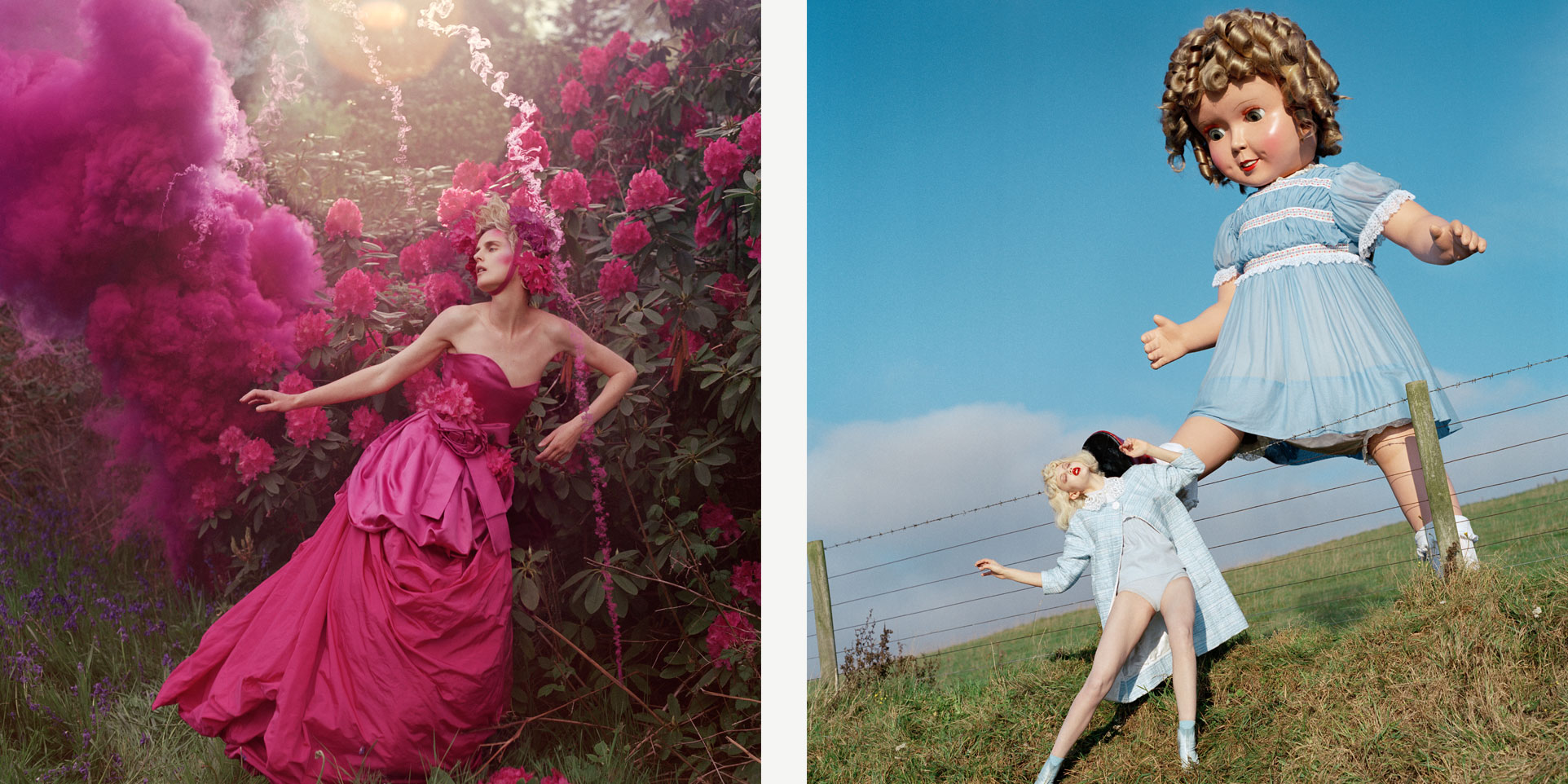
Image 1: Stella Tennant and pink powder cloud, Eglingham Hall, Northumberland, 2007
Image 2: Giant doll kicks Lindsey Wixson, Eglingham Hall, Northumberland, 2011
This romantic and extravagant style has attracted some of the biggest names in fashion. As well as working on the advertising campaigns of Mulberry, Hermès and Valentino, in recent years Tim Walker has succeeded in shooting some extraordinary images of Marion Cotillard, Kate Moss, Alexander McQueen and Helena Bonham Carter.
Despite this, Walker says the camera "is simply a box put between you and what you want to capture".
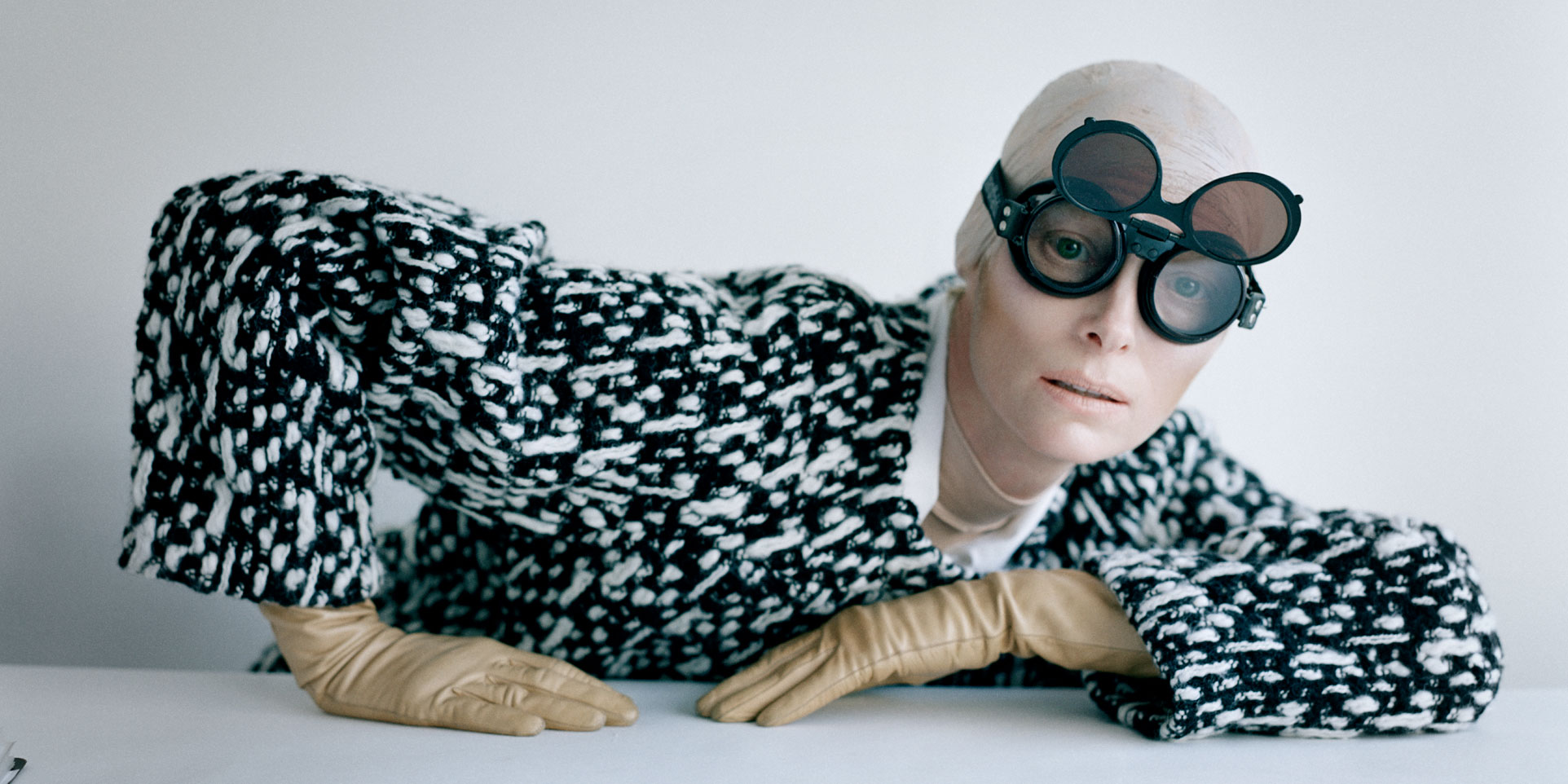
Image: Tilda Swinton and aviator goggles, Reykjavik, Iceland, 2011
The fabulous images exhibited at Somerset House include Xiao Wen & Lui Wen dressed as samurai nuns, Karlie Kloss shocked at a broken Humpty Dumpty, Olga Shearer on a dreamlike blue horse, Tilda Swinton in aviator googles and Malgosia Bela with five gravity-defying guardsmen.
If you are unable to visit the Tim Walker: Story Teller exhibition at Somerset House this month, a number of Tim Walker's photographs can also be viewed in the permanent collections of the National Portrait Gallery and the Victoria & Albert Museum, London.
Or take a journey and wander into the fantasy world of Tim Walker. -
The Brain Tumour Charity Celebrates
The Brain Tumour Charity Celebrates
Dinner with Patron and Olympic medallist Tom Daley on a cold November's evening in London was just one of the highlights of the The Brain Tumour Charity's 15th anniversary Gala Dinner last week.
The Brain Tumour Charity is the leading brain tumour charity in the UK and was set up 15 years ago in memory of Samantha Dickson, who was diagnosed with a brain tumour at the age of 14. Her parents, Neil and Angela Dickson, set up the charity to make a difference after finding there was no dedicated brain tumour charity in the UK and a dire need of funding for research and support.
To date, the charity has raised over £12 million of funds solely from volunteers and donors, which has allowed it to sponsor research into new diagnosis and treatments, provide support to patients and their families, and to improve information about this critical illness.

The charity's most recent campaign Headsmart is raising awareness of how professionals and the public can improve the diagnosis of childhood brain tumours in the UK. One year on, the campaign has shown that diagnosis times have already been reduced from 9.3 weeks to 7.5 weeks, with a target of 5 weeks now in reach.
Speaking about the last 15 years, and their achievement in building the work of The Brain Tumour Charity into the UK's dedicated brain tumour charity, Neil and Angela Dickson said "we are proud of our work over the last fifteen years but remain resolute in our determination to find new treatments and diagnosis techniques for brain tumours."
We are really delighted to be able to help support this hardworking and professional team in the important work that they do.
If you would like to help or fundraise for The Brain Tumour Charity, then more information can be found on their website. Thank you.
-
Chanel's Little Black Jacket in London
Chanel's Little Black Jacket in London
Chanel is celebrating and revisiting its iconic little black jacket with a photographic collaboration between the fashion house’s head designer and creative director, Karl Lagerfeld, and former editor-in-chief of Vogue Paris, Carine Roitfeld.
Photographs taken by Karl Lagerfeld of 109 models and celebrities wearing the little black jacket are captured in a book and displayed in a touring exhibition, which is currently being hosted by the Saatchi Gallery in Chelsea, London until November 28, 2012.
Karl Lagerfeld explains “The Chanel jacket is a man’s jacket, which has become a typically feminine piece. It has crossed that boundary. It has become the symbol of a certain feminine elegance, nonchalant and timeless."
In the spacious exhibition rooms of the Saatchi Gallery, the portraits wonderfully show off the varied looks and styles of the little black jacket. Carine Roitfeld explains “It is an easy piece, you can do a lot with it. You can wear it with jeans, over an evening dress, you can see it on a ballet dancer. It suits everyone, it is an incredible piece. It is almost like a jean jacket, but very elegant.”
Certain photographs stand out, in particular a profile of Tilda Swinton, a shot of Anna Wintour with her iconic hair bob facing away from the camera, and Carine Roitfeld herself, wearing drapes of long pearl rope necklaces.
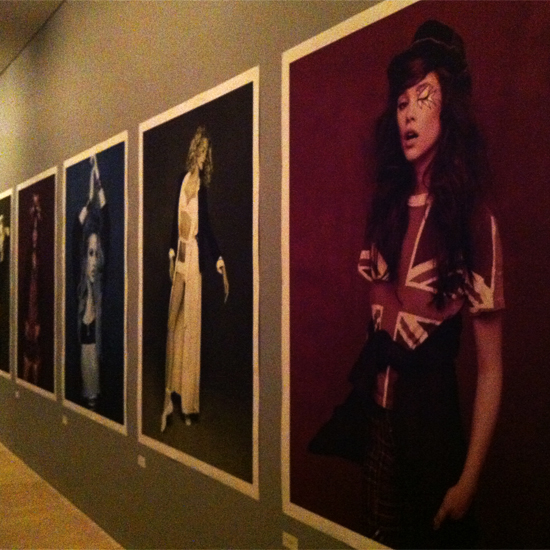
Under the creative drive of Karl Lagerfeld, the fashion house is still setting a trend. Earlier this month, Chanel displayed a spectacular Spring Summer 2013 fashion show in Paris at the Grand Palais. The stadium sized floor plan had photovoltaic-effect flooring and lines of majestic wind turbines rotating gently and synchronously as the models wandered the spectacular catwalk.
The Spring Summer 2013 collection beautifully captured the fashion house's founding attributes of simplicity, luxury and reserve. The collection included Chanel’s black and white colours, but was also lightened with unthreatening reds, blues and greens. The love of Chanel for pearl jewellery was reinvented into bold bundles of oversized faux pearls worn as choker necklaces and bracelets. Also in the collection, pearls of small or larger sizes were scattered across skirts and jackets in the form of patterns or more functionally presented as buttons.
Bringing together the arts, with fashion, jewellery design, and photography, the little black jacket exhibition is an alternative, but nonetheless inspiring look into Chanel's unique world.
-
Jewellery at London Fashion Week 2012
Jewellery at London Fashion Week 2012
London Fashion Week 2012 (LFW) just closed its doors after five days of exciting and creative activity, with new fashion collections being presented to buyers for the Spring / Summer 2013 season. For the second time, the Rock Vault at LFW also showcased some of Britain’s most innovative, fine jewellery talent. This week, it was located in the West Wing of Somerset House, at the heart of London Fashion Week, between the 14th to the 18th of September.
Exclusively for the event, a dozen leading jewellers were invited to design a unique ring using the precious metal palladium with the support of the International Palladium Board. The selected designers were Alexandra Jefford, Fernando Jorge, Hannah Martin, Hillier, Husam El Odeh, Imogen Belfield, Jo Hayes Ward, Jordan Askill, Melanie Georgacopoulos, Sophie Bille Brahe, Tomasz Donocik and Yunus & Eliza. The palladium rings were displayed in the entrance of the Rock Vault to welcome, and even entice, some of the 5,000 visitors of London Fashion Week into the vault.
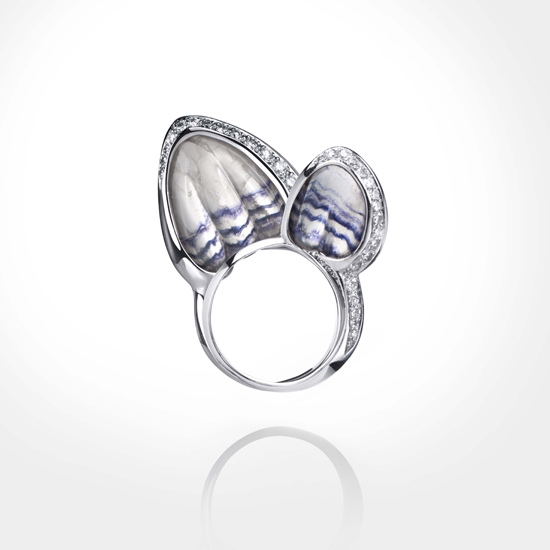
Our personal favourite was Fernando Jorge's beautiful butterfly inspired ring and earrings, displaying a traditional British mineral gemstone called Blue John.
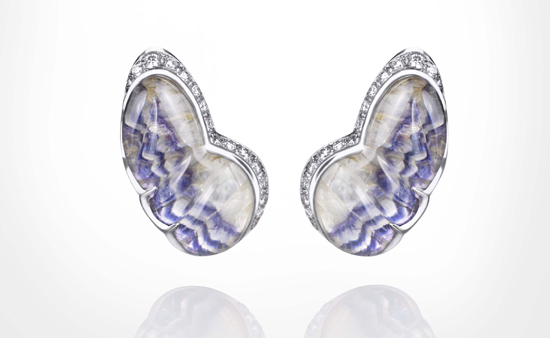
Amongst the main collections, Fernando Jorge also exhibited his new 2012 collection Green Series as well as some of his latest designs. Brazilian-born Fernando uses gemstones and craftsmanship native to Brazil and the Green Series sees his signature style evolving with its fluid lines and elegantly cut gems. His pieces are available in limited editions as each gemstone is unique and the collection effortlessly conveys a sense of beauty, sensuality and opulence.
On the catwalk this year at LFW, the main fashion brands brands introduced their new SS 2013 collections with jewellery that ranged from the bold and colourful, to the more classic. Vivienne Westwood complemented her trademark edgy British fashion style with pearl necklaces on the catwalk, worn in single, double and elaborate multiple strands, sometimes with the hint of an occasional pearl drop earring.
-
Inside Out Gems and Jewellery at IJL 2012
Inside Out Gems and Jewellery at IJL 2012
A stunning kaleidoscope of colour, gems and jewellery awaited visitors to this year's International Jewellery London exhibition. As well as catching up with some of the new trends for the Winter season to come, one of the highlights of London's leading annual jewellery event is in finding some creative and innovative collections by new designers.
IJL's Bright Young Gems initiative is now in its 8th year and gives a selection of exciting new designers a unique opportunity to showcase their work. Previous winners include Sophie Breitmeyer, with whom we launched a collection of Akoya pearl earrings and pendants last Autumn.
Chosen by a leading panel of judges, the winners of the award this year included watch-maker Sophie E Ellis, an original and playful collection by Neil Marlow and Swarovski award scholar Stephanie Bila. Impressively, three of the four winners recently graduated in Jewellery Design from the renowned Central Saint Martins design school in London.
Perhaps the most eye-catching of all was Katie Jamieson's Hidden collection, a beautifully series of architectural rings, pendants and earrings inspired by the secret garden inside the Serpentine Gallery's 2011 Summer Pavilion. These polished silver earrings (pictured) create a sparkling riot of colour with their central gemstones of tsavorite garnet and tanzanite, being surrounded by pink rubies, orange sapphires, yellow diamonds and more tsavorite garnets. Other pieces hid their gems away, to be revealed only with a movement of the hand or by sound. Designed with surprises, Katie Jamieson's jewellery succeeds in creating a collection to explore.
Elsewhere in the show, traditional design mixed with the contemporary and it was a great chance to catch up with new pieces from some favourite and established designers. Andrew Geoghegan's vibrant Chocolate Box Ring, set with baguette cut gems of aquamarine, amethyst and citrine was a perfect way to finish off the colour theme.